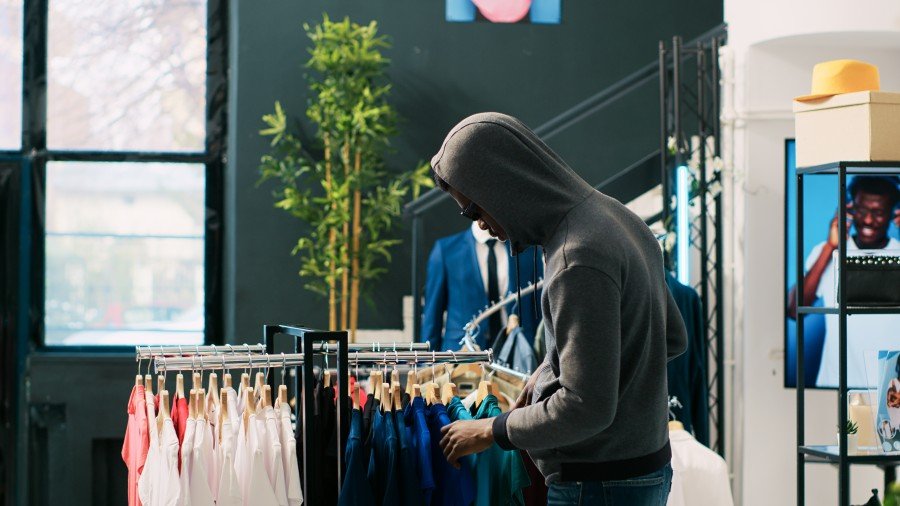Combating Organised Retail Crime: Advanced Strategies
- sachin
- June 12, 2025
- Retail Store Displays

Introduction
If you have ever felt that shoplifting is just an occasional nuisance, think again. In recent years, organised retail crime has become a major threat – one that is carefully planned, fast-moving, and shockingly costly. Whether you manage a local store or oversee a chain, retail theft is probably impacting more than just your bottom line. It is hurting your team’s morale, your customers’ safety, and your ability to grow confidently.
Advanced Approaches to Fight Organised Retail Crime

Understanding the Rise of Organised Retail Theft
Let us be clear – this is not just a few people sneaking items into their pockets.
Retail theft today is driven by groups that behave like businesses. They work in teams, often travel across cities, and know how to slip past weak spots in your store’s setup. What makes them dangerous is not just what they steal – it is how good they are at hiding in plain sight.
These groups often:
- Distract staff while others act
- Return to stores where they have succeeded before
- Target products that are easy to sell again online.
- Use tools or bags to avoid detection by basic alarms.
If you have noticed certain items always disappearing or similar incidents happening at different branches, you are not alone. This is part of a larger pattern that many retailers are now fighting against.
Proactive Use of Modern Security Systems
You cannot be everywhere in your store at once. That is where smart security systems come in – not the old-school cameras that record, but real-time tech that helps you respond.
Many stores are now using:
- AI-powered cameras that track suspicious movements or repeat visitors
- Heat maps to show where most activity happens, especially in blind spots
- Mobile alerts that notify you instantly when certain zones are breached
- Face recognition to match individuals across locations
When you pair technology with fast decision-making, you are not just watching what is happening – you are staying ahead of it.
Training Your Team to Spot the Red Flags
Technology is crucial, but your people are your most valuable defence.
The key is giving them tools and confidence to act. Staff who know what to look for can make a big difference in stopping theft before it happens.
Here is what your training might cover:
- Spotting tactics like distraction, group movement, or sudden crowding
- Quietly notifying others when something feels off
- Understanding the store layout from a theft-risk point of view
- Knowing how to engage with customers without making honest ones feel uncomfortable
Even a simple shift in awareness can make your store feel more secure to everyone – except those looking to steal.
Designing Layouts That Deter Thieves
Have you ever walked into a store and instantly felt watched? That is not by accident – it is a smart design.
Your layout plays a bigger role than you might think in preventing loss. A few small changes can dramatically cut opportunities for theft.
Here is what helps:
- Clear sightlines from registers to all aisles
- Strategic placement of mirrors in corners or behind tall shelves
- Controlled entrances and exits to reduce unnoticed walk-outs
- High-value items placed in well-lit, central zones
The idea is simple: the harder you make it for someone to hide, the less likely they are to even try.
The Role of In-Store Displays in Crime Prevention
Your in-store displays can do more than just attract buyers – they can work against organised theft too.
Well-thought-out displays are:
- Transparent, so your staff can see through them at all times
- Close to staffed counters or within eye-line of checkouts
- Lockable or reinforced for high-value products like gadgets or jewellery
- Built with shelving that limits fast grabbing
Functional in-store displays let customers browse comfortably while sending a clear message to would-be thieves: this store is alert and not an easy target.
Let Your Data Work for You
Data is not just for forecasting sales. If you are paying attention, it can also reveal theft patterns before you even see them happening.
Look at your store’s data to:
- Identify frequently stolen products or categories
- Track unusual patterns in stock shrinkage
- Pinpoint high-theft times and adjust shifts accordingly.
- Coordinate reports across your branches for trends.
The more connected your data is, the smarter your prevention can become. Even better – some inventory systems now use alerts when thresholds are exceeded or items vanish unexpectedly.
Working With Law Enforcement
No store can do this alone. Having strong ties with your local police can make a real difference.
You do not need to wait for something serious to happen. Build the relationship now so you can act quickly when needed.
What you can do:
- Assign someone from your team to liaise with law enforcement.
- Report even minor incidents regularly so patterns are easier to see.
- Join a local retailer group that shares crime alerts.
- Offer access to CCTV or footage whenever necessary.
You will find that being seen as cooperative and prepared also means your store gets priority attention when it counts.
Customer Engagement as a Subtle Shield
You might not realise this, but a friendly “hello” can actually stop a theft. Engaging with people makes them feel seen, which is exactly what professional thieves try to avoid.
Encourage your staff to:
- Greet each person who walks in.
- Offer help in quieter areas of the store.
- Walk the floor regularly instead of staying behind counters.
- Make friendly small talk with returning customers.
This human connection is not just great service – it also quietly tells people that your team is watching and involved.
Cutting Off the Resale Market
One of the reasons organised crime exists is because there is a profitable resale market online. But you can make things harder for them.
Ways to reduce resale value:
- Track serial numbers and report stolen goods quickly.
- Use embedded barcodes or tamper-proof packaging.
- Partner with online platforms to flag suspicious listings.
- Monitor listings yourself if you notice trends in stolen goods.
When reselling becomes risky, the motivation to steal drops.
Protection Without Sacrificing Experience
You do not want your store to feel like a fortress – and neither do your customers.
Here is how to strike the right balance:
- Keep security systems visible but not overwhelming.
- Use polite signage to explain locked cases or limits.
- Train your staff to stay vigilant without hovering.
- Make your layout inviting, not cluttered or confusing.
When your store feels secure but still warm, it creates trust – for your honest shoppers and your team.
Do Not Forget the Stockroom
It is easy to focus on the sales floor, but your back-of-house areas matter just as much.
Your checklist should include:
- Limited access with codes or biometrics
- Logs to track inventory movement in and out.
- Multiple staff overseeing returns or restocking
- Random checks and internal audits
Remember: internal theft is still theft, and prevention starts behind the scenes.
Beyond the Camera: Smarter Tech Options
Today’s technology can do more than just record.
You could explore:
- RFID tags for high-value items
- Smart checkouts that detect abnormal scanning patterns
- Weight sensors that spot when something goes missing from shelves
- Alerts when certain items are removed too quickly or frequently
All of this helps you stay proactive, not just reactive.
Make Customers Your Allies
You do not need to face this alone. Customers who care about your store will often want to help – if you let them.
Try this:
- Display QR codes for anonymous tip lines.
- Mention reporting options during checkout or via email receipts.
- Run awareness posts on your social media stories.
- Say thank you publicly when a customer speaks up.
You are building not just a secure store but a loyal community
Managing the Story When Incidents Happen
No one likes a theft incident, but how you talk about it matters more than you think.
When something happens:
- Be calm and transparent, not secretive.
- Frame your response around customer safety and action taken.
- Thank your team and authorities for their support.
- Reassure your audience that you are improving security immediately.
It is not just about managing theft – it is about managing trust.
Conclusion
You know better than anyone that retail theft is no longer a minor issue. It is organised, it is strategic, and it is costing you more than just money. But with the right tools, the right team, and the right mindset, you can take back control. From smart layouts to engaging in-store displays and from tech-driven alerts to community partnerships, every piece of the puzzle matters. If you are serious about taking prevention to the next level, companies like JS DISPLAYS are ready to support you with smarter design solutions. You are not alone in this fight – and now, you are more prepared than ever.



